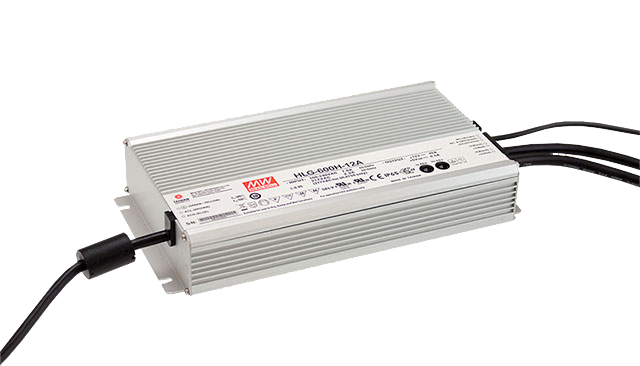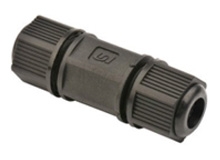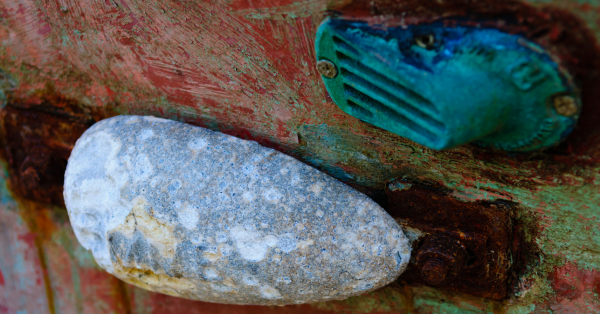LED Drivers: Ensuring Your LED Driver Can Live a Long Life
LED Drivers can last a long time under the correct conditions, so we’ve put this article together to highlight what conditions users need to adhere to ensure their LED drivers can live a healthy life and avoid premature failures in outdoor conditions.
Key Takeaways
Use weatherproof Cable Joiners
Avoid Risk of Corrosion.
- Avoid mounting LED Driver near weather exposure.
- Avoid mounting LED Driver on surfaces in contact with weather e.g. brick or concrete walls with exposure to rain.
Preventing Electrolytic Corrosion
- Be mindful of other power supplies in the nearby vicinity.
- Adopting a sacrificial anode, for example, such as zinc, can prevent corrosion of the metal case. The zinc will corrode first and quickly, so checking this frequently will make it apparent if your LED Driver is at risk.
Avoid Mounting in Direct sunlight.
- External temperatures, such as the sun, combined with the internal temperatures of a running LED driver can cause the driver to fail.
LED Driver IP Ratings
Many LED Drivers can have an IP67, IP66 or IP65 ingress protection rating. This means the housing of the LED Driver can be resistant to particular conditions, such resistant to rain penetrating the housing and making contact with internal components.
The IEC has developed a range of ingress protection ratings. These ratings can indicate the propensity to which an ingress for an enclosure is resistant to the intrusion of dust or liquids.
If you’d like to learn more about these, you can learn more in our blog, Power Supply IP Ratings Explained or IP67 LED Drivers from MEAN WELL.

Weatherproofing Connectors.
The first step in ensuring the lifetime of your LED Drivers is ensuring your cable connections are free from exposure to the elements. Proper installations should ensure a minimum of IP67-rated cable connectors are used during installation.
Options such as the MEANWELL CJ04 Cable Connector or the Power Source WCC20-2-SC cable connectors are perfect solutions, providing installations with corrosion-resistant plastic bodies, and sealed water-resistant housing rated at IP68.

Avoiding Risk of Corrosion.
There have been instances where corrosion has been at play in destroying LED Drivers as a result of electrolysis. This event can occur if an LED Driver mounting has some exposure to weather in outdoor settings and is in contact, directly or indirectly, with the ground, such as mounting to brick or concrete walls with exposure to rain.
This issue can occur with MEAN WELL power supplies with metal casings, such as the MEAN WELL ELG series LED Driver.
The combination of the LED driver's metal casing paired with water and a small current from an external power source can cause electrolysis corrosion of the metal casing, eventually leading to catastrophic failure of the LED Driver.
Always be aware of the possibility of small currents of other power sources in the vicinity, such as:
- DC Output of the LED Driver itself via the LED it’s powering.
- Other Power supplies in the same vicinity.
- Other unrelated power sources, such as stray ground currents flowing other electrical equipment in the building.
- Also, be aware of dissimilar metals used to mount the power supplies to their fixture.
Preventing Electrolytic Corrosion.
Taking the right steps to avoid electrolytic corrosion, we’ve listed some basic steps below:
- Protect the power supply from rain and weather exposure. If enough water is present and allowed to build, this water can form a path from stray currents to your LED Driver.
- Insulate your LED Driver from the mounted surface, wall, structure or ground, by using plastic mountings, ensuring your LED driver is insulated and not in direct contact with the mounting surface.
- Using a sacrificial anode to prevent corrosion of the case metal. Some real-world examples are zinc anodes, as zinc is far from active than the aluminium casing, the zinc will corrode first. Keep in mind, that you must check this zinc anode regularly as corrosion of zinc can occur quickly and replace accordingly.
- Finally, a sacrificial anode is buried in the ground close to the LED driver to conduct any stray current to earth. Remember to check regularly and replace accordingly due to zinc’s nature to corrode quicker than aluminium.

Exposure to Sunlight.
All MEAN WELL Power supplies have a derating curve listed within their specification sheets. These derating curves outline the temperature ranges where power supplies will begin to drop efficiency and instances of prolonged overheating subsequently leading to catastrophic failure. LED Drivers exposed to direct sunlight can speed up the overheating process and lead to failures of these units. Please be mindful that LED drivers failing from overheating cannot be covered under the MEAN WELL manufacturer’s warranty.
Ensure your MEAN WELL LED Driver is installed within a shaded location away from direct sunlight.

In summary.
Taking the necessary precautions above should ensure your MEAN WELL LED Driver can live a healthy life and serve your LED power needs. Ensuring the correctly IP-rated cable connections are implemented, ensuring your LED Driver is installed with correct insulation materials between surface and driver and ensuring your driver is away from weather and direct sunlight. Extra precautions such as utilising a sacrificial zinc anode can be helpful to ensuring your MEAN WELL LED Driver is away from the harm of electrolytic corrosion from nearby stray currents from external power sources.
If you have any further questions about ensuring the life of your MEAN WELL LED Driver, the ADM Team is here to help. Please call 1300 236 467 or message the team directly at sales@admtech.com.au or visit our enquiry page here.

